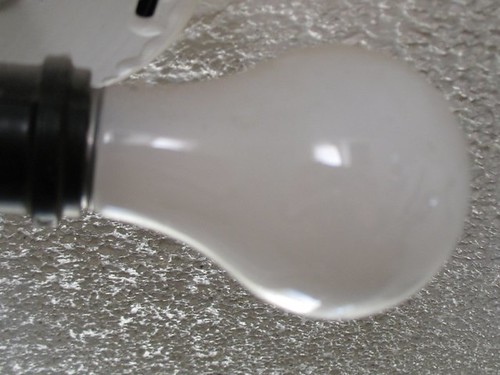 Incandescent:
Incandescent:These are similar to the most common light bulbs that you see. They work in any standard light socket and provide a spectrum of light more suited to your plants needs than everyday house lights. These would be useful if you are keeping a very small garden mostly comprised of herb and plants you intend to move outside. However I must advise against incandescent bulbs. They are extremely energy inefficient (costly) and do not provide the best light spectrum or intensity needed for plant growth.
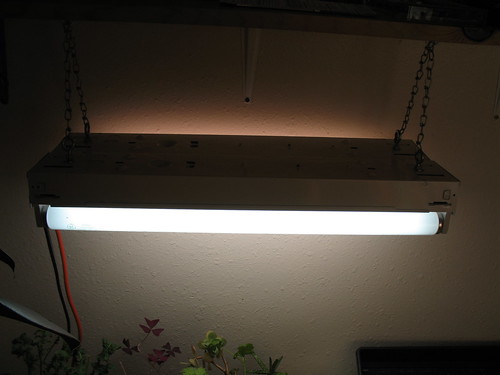 Fluorescent:
Fluorescent:These lights are commonly used in office building. They require a fixture, but the ballast is built in. There are a couple of different bulb types that you can buy. The regular bulbs will get the job done, but there are manufacturers who are making bulbs that attempt to duplicate natural sun light as much as possible. Fluorescents are much more energy efficient than incandescents. The down side is that they do not provide the intensity needed for full mature growth. This is the type of lighting that I currently use for my seedlings and leafy greens.
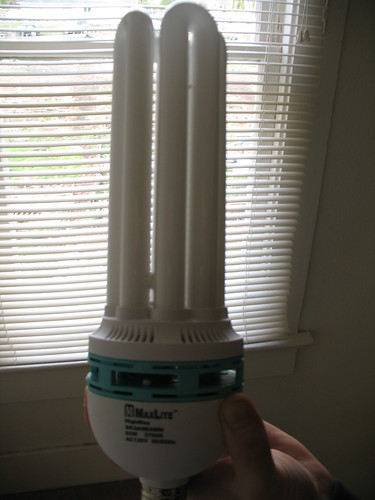 Compact Fluorescent:
Compact Fluorescent:These are a sort of hybrid between the first two. Take cautious when buying this type of bulb. The warm white will not benefit your plants. You must get the full spectrum bulbs. These would be ideal for use in apartment where space is an issue and a large bulb may interfere too much with the rest of the space. You get the ease of an incandescent with the increased energy efficiency of a fluorescent.
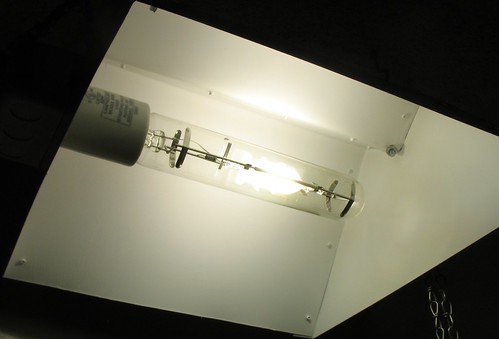 Metal Halide:
Metal Halide:Part of the High Intensity Discharge (HID) group, these lights are good for larger operations. These provide a better growing environment during the vegetive phase as they produce the necessary spectrum for growth. They are able to closely replicate natural sunlight while still being fairly efficient. The down side is you will need a separate ballast.
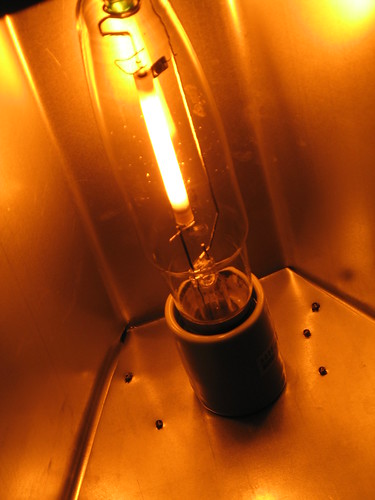 High Pressure Sodium:
High Pressure Sodium:Another option of HID lighting. The benefits and disadvantages are similar to Metal Halides. HPS lights are more suited for the flowering and fruit producing plants of your garden. I use a HPS light for the bulk of my garden.
LED:
LED's a fairly new technology. They are the most energy efficient mode of lighting. You can also get LED lights that produce the exact spectrum of lighting needed for plants to grow, making them theoretically more impactful than natural sunlight. However, they lack the intensity to support larger plants, such as tomatoes.
This is just a quick little blurb about the main types of lighting. I hope to get back in here and expand in the future.

No comments:
Post a Comment